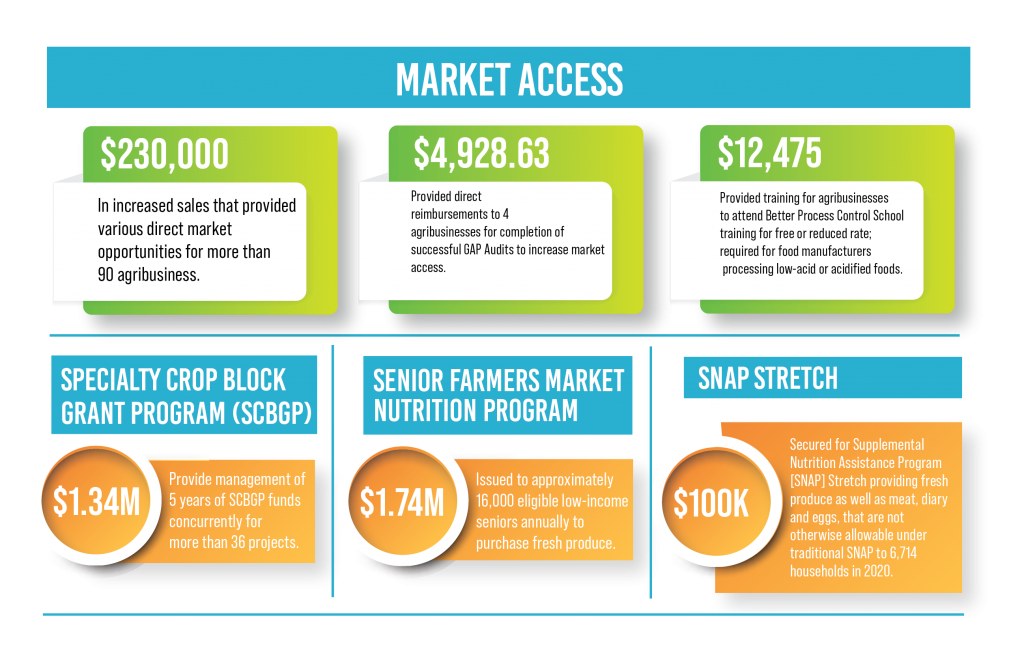
Agriculture has been a cornerstone of the U.S. economy since Pilgrims first arrived at Plymouth Rock. With some of the best farmland in the world, the United States is the second largest agriculture producer right behind China. Agriculture and related industries contribute over $1 trillion to the U.S. gross domestic product each year. In West Virginia, the impact of agricultural commodities is equally significant, accounting for $800 million annually to our economy. If timber products are included, that number jumps to nearly $5 billion. According to the latest U.S. Census of Agriculture, the Mountain State’s approximately 24,000 farm operations rank 25th in poultry and egg production, 27th in Christmas trees, 30th in fruits, tree nuts and berries, and 38th in cattle.
Poultry is by far the largest contributor to West Virginia’s agriculture economy, bringing in nearly $300 million annually to the State. Additionally, some of the world’s best turkey genetics are developed right here in West Virginia. Following poultry, West Virginia farmers primarily focus on raising cattle, an industry worth around $157 million annually. Just like our turkey industry, West Virginia’s cattle herd has some of the best genes available for these livestock. A focus on animal husbandry makes sense, given that the State lacks flat land usually needed to grow staple crops such as corn or wheat. At the same time, our mountainous territory is an asset providing a natural barrier to disease outbreak.
The Mountain State leads the nation in small, family-owned farms, which is much different than the large, corporate agriculture we know in the Midwest. This means producers must focus on different markets and products that require less land and time to manage. Throughout the pandemic, the importance of a robust local agriculture system has been evident. As federal production facilities managed outbreaks within their workforce, it caused food shortages in grocery stores. To keep up with demand, local agriculture producers stepped in to provide supplies to citizens of West Virginia.
What we have learned thus far from the COVID pandemic is that agricultural production is more than just an economic driver for the State, it’s security. Having a safe, secure food supply is essential when facing potential emergencies. Keeping nutrition at a premium for our citizens is vital to fighting off diseases, as well as keeping morale high, and both are necessary for healthy communities. As federal facilities struggled to maintain production while consumer demand increased, in West Virginia we worked to ensure local suppliers could remain operational.
As a result, our State experienced record increases in both meat processing, as well as sales through local farmers and markets. As local demand continued to rise during the pandemic, West Virginia agricultural producers were in an optimal position to take advantage of the intensification of consumer awareness about food quality and source. If there was ever a time for West Virginia to tap into local food consumption as an economic driver, increase food security, and further develop the state’s ability to respond during a crisis, it is now.
The West Virginia Department of Agriculture (WVDA) and its partners have been working tirelessly to enhance the impact of the state’s agricultural sector. To help foster economic growth, we have spent a tremendous amount of time to modernizing West Virginia’s agriculture laws. Some of the law that we have adjusted over the past five years had not been updated for almost seven decades. Our mission has been, and continues to be, to find ways to reduce barriers on local producers and bring necessary regulations into the 21 st Century.
Some of the significant changes to date include streamlining regulations for small producers and businesses. In addition, we have analyzed industries, such as dairy, which have struggled in recent years, to try and better understand what has contributed to their decline. In the case of dairy, this led the Legislature to move sole authority over that industry to WVDA to better allow for regulation informed by subject-matter experts. We have also adjusted rules and regulations to produce non-potentially hazardous foods and milk to allow new market opportunities.
Farmers markets saw significant change with the move under the WVDA. Permits, previously issued on a county-by-county basis, were consolidated into a single statewide permit, thereby lowering the cost to do business at markets around the state. Permits for many products have been eliminated entirely. Businesses like Mama Faye’s Fudge & Confections in Greenbrier County can now sell their products in retail locations, and not just through farmers markets. By removing many regulations from non-potentially hazardous foods, which include certain types of baked goods and other low-risk food items like hard candies and dried herbs, home businesses are now poised to flourish.
To move the economic needle in a positive direction for our State, we must also leverage programs that can further economic development opportunities through agriculture. WVDA’s mission is to protect the State’s food supply and foster economic development through agriculture, and the Department has developed numerous programs with that goal in mind. The most prominent of these is the West Virginia Grown program. Started in the 1980s, West Virginia Grown is a consumer-facing program designed to market products produced, processed and made in West Virginia to consumers. By placing the West Virginia Grown logo on a product, our members are assuring buyers that product was grown or processed, with quality ingredients, in the Mountain State.
As local food continues to grow in popularity and consumers turn to healthier, fresher options, branding West Virginia food products will be vital to increasing potential market opportunities. Just like our Tourism Department must market West Virginia’s beauty as a must-see destination, we at the Department of Agriculture are focused on giving our local producers a competitive edge in the crowded food and beverage space. This is an important component to helping grow and diversify our economy, as well as expanding and strengthening local food systems. When consumers buy West Virginia Grown products, those dollars go right back into our communities.
As we seek to expand opportunities in the food and beverage sectors in West Virginia, it is imperative we invest in resources to foster that expansion. For example, the WVDA laid the groundwork for this investment last year, when it worked with the Legislature to establish an Agriculture Investment Fund. Even though there are not yet appropriated dollars, we hope to mirror a program after states like, Kentucky, Virginia and Michigan. These states have experienced significant positive economic outcomes, such as an increase in agribusinesses and other related enterprises that create jobs and provide significant contributions to the economy. These states have tackled various issues by investing resources to foster economic growth directly into the agriculture sector. West Virginia is poised to do the same.
Five years ago, WVDA established its Agriculture Business Development division. The focus of this new division is to support start-up and scale-up agribusinesses here in West Virginia by providing professional services and assistance, while also working to attract new food and beverage businesses to the state. Our goal was simple: to take agriculture seriously and recognize it as the powerful economic driver it is and can be. We also wanted to create better relationships with our partners to share that mission and collaborate on existing efforts. These efforts have assisted many organizations of various sizes to start-up and scale-up during this time.
A prime example is Buzz Food Services located just outside of Charleston. Thanks to collaboration with our Agriculture Business Development division and other state partners, Buzz is expanding its operations to include a top-of-the-line, USDA-inspected livestock slaughter and processing facility and leveraging abandoned mine land funds to do so. This is a huge opportunity not only for local farmers, who tend to send their cattle to large stockyards in the Midwest, but also for local restaurants and consumers who want to purchase meat raised and processed in the Mountain State. In addition, their new facility will employ well-paying, technical jobs that our state desperately needs. Local meat processing experienced a 200% increase during the pandemic, so focusing on ways to expand these operations will prove to be an economic driver.
To replicate these successes across West Virginia, we must continue to search for opportunities to improve the agricultural business environment of the state. Any good battle plan starts by reviewing and conquering barriers to the success. To the extent that government is one of those barriers, we must start there, continuing our efforts to modernize regulations while also investing in programs that support the agriculture industry. We have started down a good path of reducing barriers on small businesses while providing more resources for growth, but we will need real commitment from state leaders to create a more viable pathway. For an example of how some programs have been applied to create market access for agribusinesses in West Virginia, see the infographic.

Enticing agribusinesses to the State will require all the tools at our disposal for business attraction and expansion. This includes having matching dollars to help the exploration and development of these industries. In the past five years, the WVDA Agriculture Business Development team has developed strong relationships and project alignment with the West Virginia Economic Development Department. Together, I know we are making great strides towards creating specific tools geared towards agriculture, but a greater investment will be needed to advance this work.
Going forward, West Virginia must fund programs to foster economic growth specifically in the agriculture sector. The State’s premier agriculture branding program, West Virginia Grown, helps local businesses brand and market their products, but all the effort to-date have been made without any dedicated budget funding. Any successful branding program needs a certain amount of market leverage to get consumers to buy into the message being promoted. Without those up-front dollars, we can’t effectively educate consumers, both in and out of state, to look for West Virginia Grown products.
Agriculture has changed a lot in the last fifty years as the average age of the farmer continues to rise and fewer young people are entering the industry. This has forced the landscape of agriculture to embrace technology and think differently about workforce development to meet shifting consumer demands. Despite its prolific agricultural production, the United States is not immune to crisis, political landscapes or unfair trade deals. Therefore, agriculture is more than an economic driver for any state that is looking to preserve our way of life; it is national security.
Nonetheless, there is a great deal of potential for agriculture and other downstream industries in West Virginia. This potential will only be realized with additional state investment and resources. If the Mountain States takes a proactive approach toward needed investments, the industry will flourish. We must make real commitments toward agriculture business development by recognizing agriculture for the economic driver it is and can be. Our citizens, health, future, and economy can only benefit.
